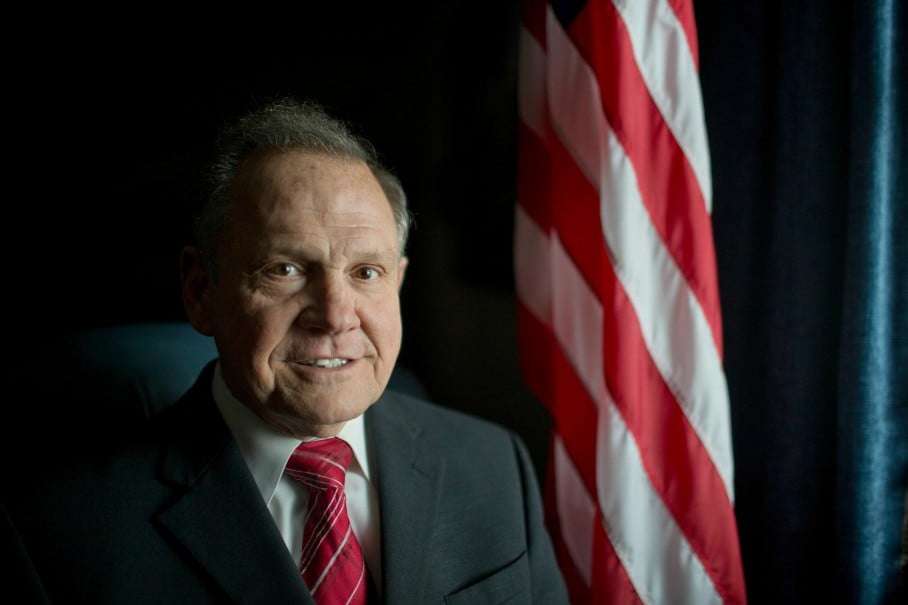The Volokh Conspiracy
Mostly law professors | Sometimes contrarian | Often libertarian | Always independent
Kim Davis and the case of Justice Moore

Kim Davis's refusal to issue marriage licenses to same-sex couples in the face of a federal court order brings to mind Alabama Supreme Court Justice Roy Moore's refusal to comply with a federal court order calling for the removal of a Ten Commandments monument from a state courthouse. Judge Moore—like many of Kim Davis's defenders—believed the Supreme Court decision upon which the lower court order was based was in error. Yet within our constitutional system, that does not matter. The obligation of state officials to comply with federal court orders is not contingent upon the correctness of those orders, or the correctness of the Supreme Court decisions upon which they are based.
The Honorable William Pryor of the U.S. Court of Appeals for the Eleventh Circuit discussed these events in last year's Sumner Canary lecture at the Case Western Reserve University School of Law. Judge Pryor, at the time, was Alabama's Attorney General. And while Judge Pryor may have been more sympathetic to Justice Moore's take on the Establishment Clause than to the Supreme Court's rulings on the subject, he recognized that Justice Moore was nonetheless obligated to comply.
Here's how Judge Pryor recounted the relevant events in his lecture:
Let us consider next the controversy that received the most public scrutiny during my tenure as a state attorney general. That controversy involved not a state law but a decoration in a state judicial building. After his election in 2000 as the Chief Justice of Alabama, Roy Moore designed and installed a monument of the Ten Commandments to "depict the moral foundation of law." Chief Justice Moore invited a Christian media organization to film the installation, and soon afterward several citizens filed two federal lawsuits that sought an injunction to remove the monument. I had differences of opinion with Chief Justice Moore about several matters, but I did not think that a display of the Ten Commandments in a courthouse violated the Constitution. After all, depictions of the Decalogue appear in other American courtrooms, including in the courtroom of the Supreme Court of the United States. But Chief Justice Moore did not make his defense of his monument easy as he questioned longstanding precedents about the First Amendment. Eventually both the district court and the Eleventh Circuit ruled that Moore's monument violated the Constitution. Then things got interesting.
Chief Justice Moore refused to obey an injunction to remove the monument. Moore argued that he could ignore the rulings of the federal courts as contrary to the Constitution. He argued that the federal courts, not he, had violated the Constitution. His approach of state review of a federal judgment would turn the Supremacy Clause upside down.
I disagreed with Chief Justice Moore's approach. I instead assisted the associate justices of the state supreme court in removing the monument and complying with the federal injunction. Although I did not think that a depiction of the Ten Commandments in a courthouse necessarily violated the Constitution, I recognized that Article III of the Constitution vested the federal courts with the judicial power to decide cases or controversies arising under the Constitution and laws of the United States. I recognized that Chief Justice Moore's refusal to comply with an injunction entered after he had been given an opportunity to defend his position in a trial and an appeal was lawless. And I later prosecuted him on charges of judicial misconduct and succeeded in having him removed from office.
As the state's AG, Pryor recognized that, whether or not the Supreme Court's establishment clause jurisprudence properly excluded Ten Commandments displays at a state courthouse, Article III of the Constitution entrusts federal courts with the authority to resolve such questions in cases or controversies that are brought before them and state government officials—including state Supreme Court justices—have an obligation to comply with federal court orders issued in the context of such cases. This system does not presume that federal courts, or even the Supreme Court, gets every question right, but it recognizes that the rule of law requires a system through which such questions can be resolved.
[As a sidenote, the entire speech, which discusses when executive branch officials have a duty to enforce or defend the law, is worth a read.]
The Supreme Court's Obergefell decision may have been wrong—and Kim Davis may have a sincere belief that issuing marriage licenses on behalf of the state violates her religious conscience—but that does not excuse her failure to perform her public duties as a public official and her refusal to comply with the law.
Note also, if the case were truly about accommodating her religious conscience, and nothing more, then there would be an easy solution: Allow the Rowan County deputy clerks to issue marriage licenses to same-sex couples. According to multiple news reports Davis objects to this solution, however, as the marriage licenses will still bear her name as the clerk of the county. This is but further evidence that she has the wrong job.
Patterico has more here.
UPDATE: I also heartily recommend Judge Pryor's "Moral Duty and the Rule of Law," from the Harvard Journal of Law & Public Policy. It elaborates on Justice Moore and the Ten Commandments controversy, and also notes the distinction between civil disobedience and unlawful defiance. Judge Pryor also reiterates the point made in one of my earlier posts, that if a public official is unable to uphold his or her oath to obey the law (and that includes applicable court judgments) they should resign.
To get the Volokh Conspiracy Daily e-mail, please sign up here.

Show Comments (0)